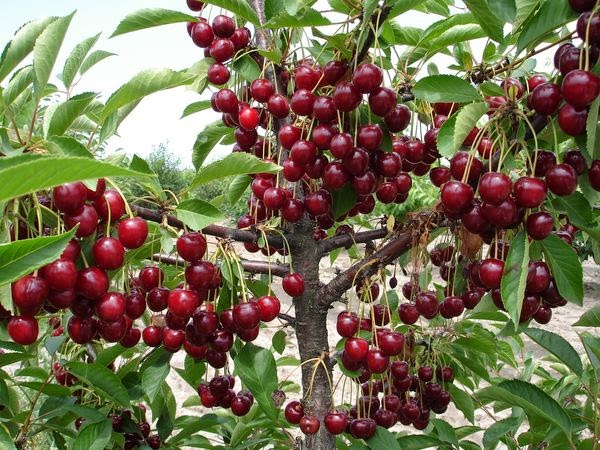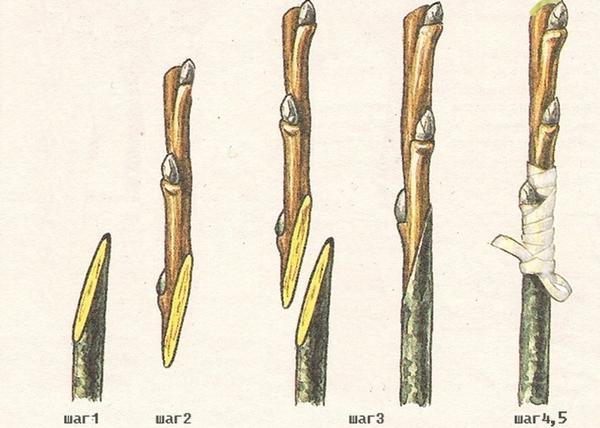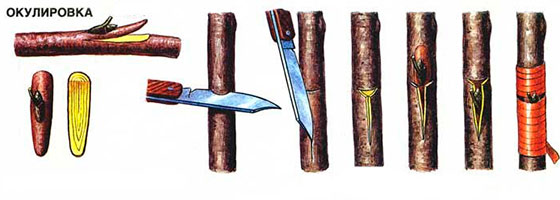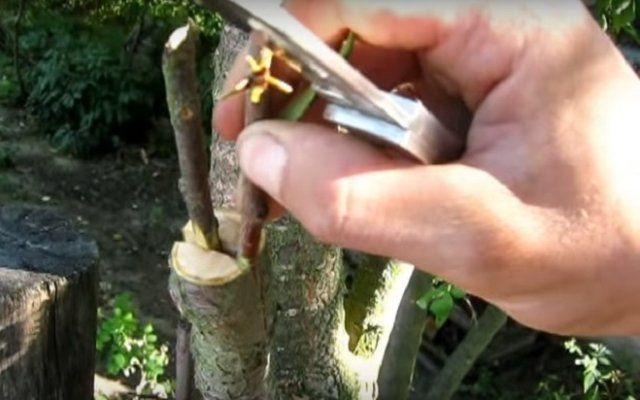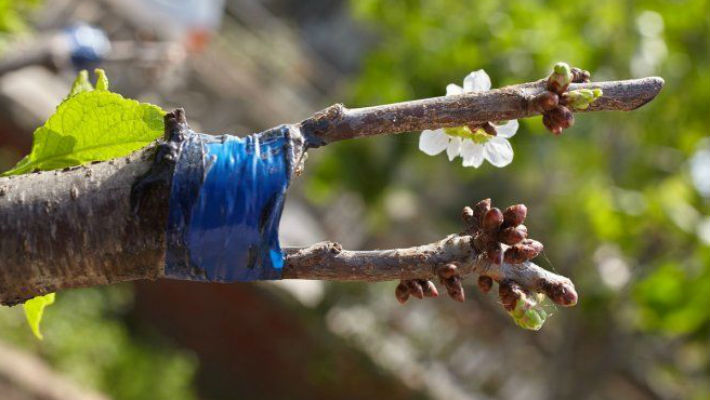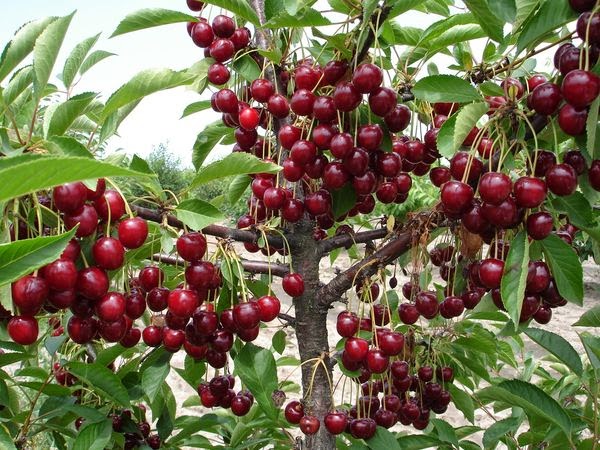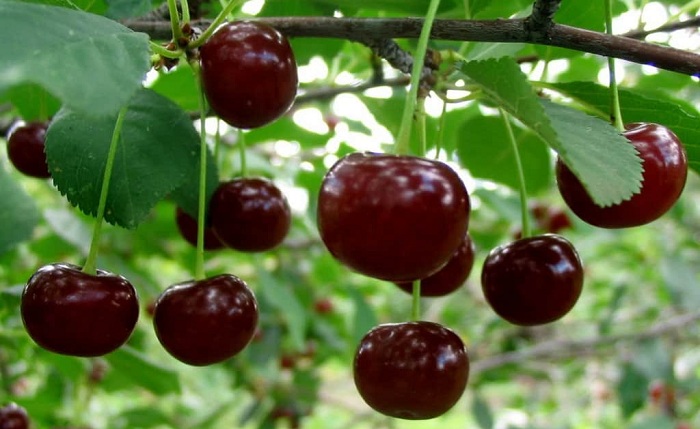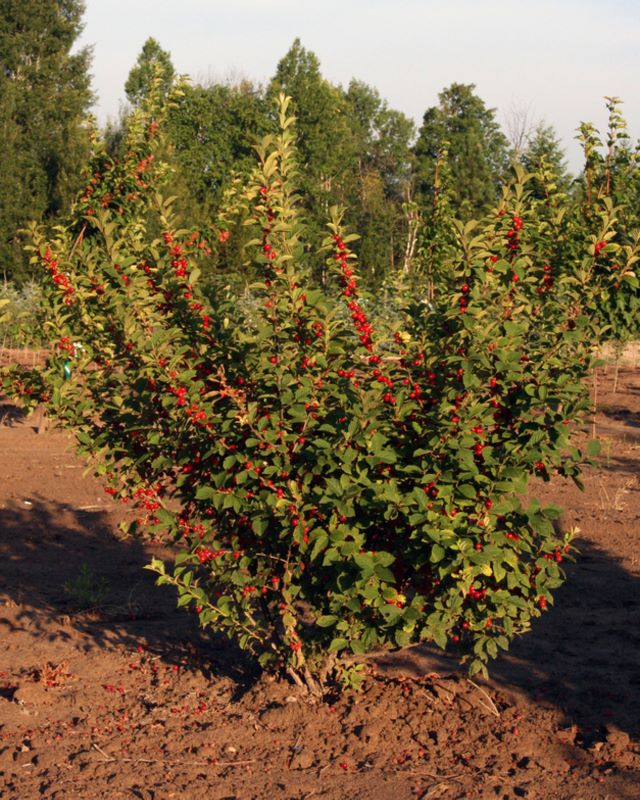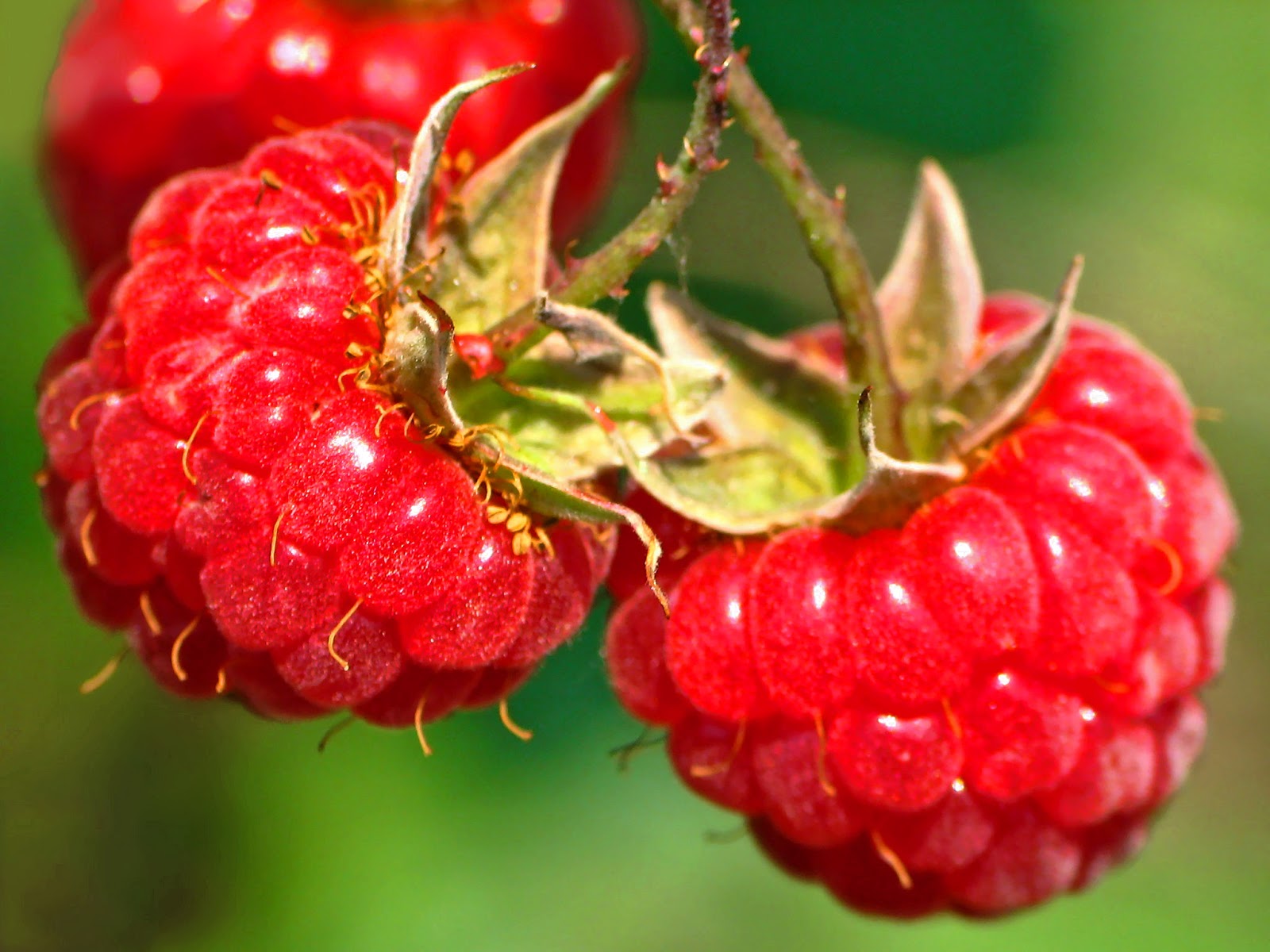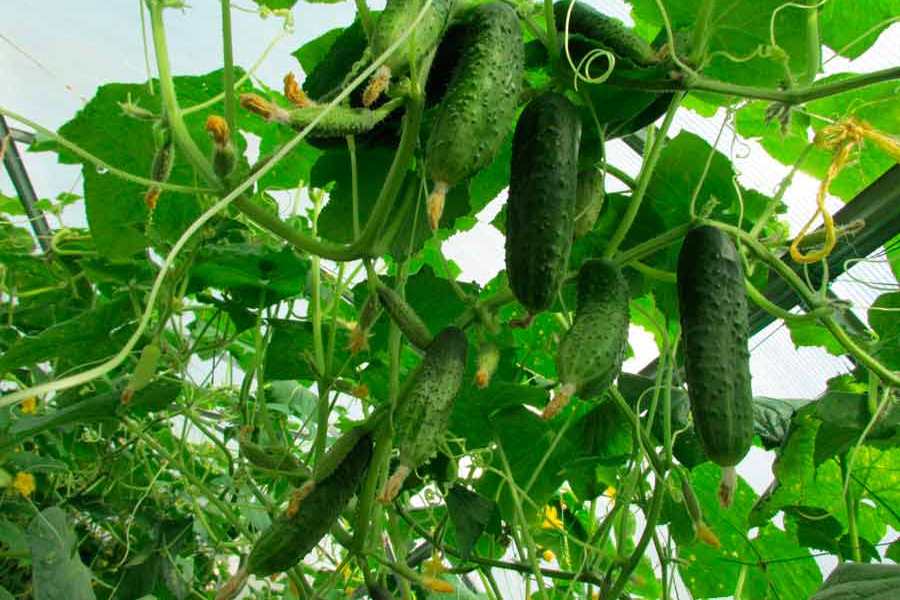Content:
You can improve an existing cherry tree by using grafting. Not all gardeners know if it is possible to plant cherries on cherries or whether it is better to use other trees available in the garden. The main thing is compliance with the tree compatibility rule. A correctly performed grafting will allow you to get a crop on a new branch in three years. It makes it possible to grow branches with berries of different varieties on one plant, which is ideal for small backyards.
Varieties, varieties and culture features
Cherry belongs to stone fruit crops widespread in Russia. The plant is unpretentious, thanks to this it grows not only at home (in the Crimea and the Caucasus), but also in other regions of Russia.
A certain variety is selected for each region. It has distinctive features related to yield in certain climatic conditions, soil characteristics and moisture level, winter hardiness, ability to resist the influence of diseases or resistance to parasites. In addition, there are late or early maturing varieties.
In the Moscow region and central Russia, it is better to plant frost-resistant varieties. These include Chernokorka, Molodezhnaya, Volochaevka, Malinovka, Vole, etc. Tall Turgenevka (up to 3 m), also common in these regions, yields a harvest in early July, and its berries are large and fleshy. However, the disadvantage of the variety is the period of 5 years required after planting until the first harvest.
Generous is a sour variety that yields up to 8 kg. from the plant. Frosting is a sweet dessert berry. The tree bears harvest from mid-July. The disadvantages of the variety include poor resistance to spring frosts, which occur after the snow melts. Altai swallow is a special variety bred for Siberia with its harsh climate. Self-pollinated early ripening variety has become widespread among gardeners.
Felt (Chinese) cherry is interesting as a species. It differs in growth (up to 3.5 m). Flowers bloom simultaneously with the appearance of leaves, very amicably. They have a pleasant scent, attracting bees to them. The flowering plant itself resembles a bouquet of flowers. Harvested from one tree up to 4 kg. Cherries are small - 2-3 gr. They are notable for poor keeping quality, therefore the variety is not grown on an industrial scale. To the taste, felt cherry is sweet, reminiscent of sweet cherry. This makes it popular with gardeners. The downside is the short life span - no more than 20 years. The variety is most often used in the Russian Far East in China, since ordinary cherries take root there poorly.
Cherry grafting on cherries
Another cherry tree is rightly considered the best stock for cherries. The cherry-to-cherry grafting method is the most effective due to the fact that plants of the same variety grow together better with each other.
Optimal terms for vaccination are:
- springtime;
- summer until the end of the period of abundant sap flow.
Grafting cherries in spring is the best option for beginners. The abundance of juice will make it possible for the scion to take root better.The best dates are from late April to mid-May. If you tighten the vaccination until the end of summer, you can get into a period when the juice moves very slowly, the fiber becomes tough and there is practically no opportunity for the grafting to be fixed. The procedure at the end of summer is considered more difficult, especially for novice gardeners.
Preparation of stock and scion is carried out in advance and is an important step for a successful vaccination. It is customary to call a stock a tree on which a process of another plant will be fixed. The rootstock must have a good root system. Specially grown young trees, which are no more than 2-3 years old, are often used. The use of old trees is also allowed, especially if you want to grow branches with different tastes on the same trunk. This method is used in small areas. A prerequisite for using old trees will be the presence of young branches on them.
An admission is a short process that has kidneys. Cuttings are harvested at different times from a checked tree:
- Autumn. Choose the time after the leaves and the onset of the first frost. You need to choose a young tree that is already yielding a crop, a branch of 0.5 cm in diameter. The length of the process is up to 40 cm. The main thing is the presence of at least three well-developed buds on it. The cut site is treated with garden pitch. You can store the twig both in the refrigerator and in the cellar, in a specially prepared place. For example, by wrapping the future scion in polyethylene or placing it in a sandy composition. The cut site must be renewed immediately before inoculation.
- In the winter. If the area of residence is characterized by warm winters, in which frosts do not occur more than -18 -20 degrees Celsius, then the scion can be prepared on any winter day. With the onset of more severe frosts, you can prepare branches that are already frozen.
- Summer. For cut summer grafts, the main thing to learn is one rule - the cutting is cut from a young green branch and grafted as quickly as possible. Every minute plays a role, so you need to hurry.
There are several ways from professional gardeners how to properly plant cherries on cherries:
- copulation;
- budding;
- cleft grafting.
Each has some distinctive features in stepping through the vaccine.
Cherry copulation
Copulation is a method of inoculation used when the diameter of the grafting material is identical.
Step-by-step instructions for successful copulation:
- Making oblique cuts on the rootstock and scion, 2-3 cm. After that, the two plants should ideally touch smoothly. For best cutting performance, use a pre-cut clear tube. It will become a template for making slices on both branches.
- Connect the twigs.
- Treat the junction with garden pitch.
- Secure the vaccination site with foil, and then carefully wrap it with electrical tape or tape.
- Remove the package after 10-14 days.
The fact that the grafting was successful will be evidenced by the appearance of buds and young leaves on the scion. This method of grafting for cherries is not always suitable, since it does not guarantee the strength of the connection and its immobility. The wood of this plant is fragile and the branch at the grafting site can easily break off.
Cherry tree bud
Budding is considered the most difficult method of vaccination. Held in mid-June. The site of the operation is the axillary kidney.
When budding cherries, the following manipulations are carried out:
- Choose a healthy and strong bud on a tree branch.
- The kidney and bark around it is cut off, drawing a circle with a diameter of about 2 cm.
- Similarly, a cut is made from the cutting chosen for the scion.
- The cut bud from the scion is placed in the place of the cut bud on the rootstock.
- Everything is firmly fixed with foil and tape, except for the kidney.
- The film is removed after 3-4 weeks.
Cleft grafting
It is considered the easiest way for beginners.
The description of the procedure looks like this:
- Choose a stock with a diameter of 5-6 cm.
- Make an incision with a wedge downward 3-4 cm deep.
- So that the edges of the notch do not close, insert a spacer made of wood or any available material.
- Leave 4-5 buds on the scion.
- Make a wedge-shaped cut at its base.
- Insert with a cut inward into the incision on the scion.
- Wrap everything with foil and secure.
If the size of the rootstock allows, you can plant 2-3 scion branches at the same time.
You also need to carefully monitor the applied film, secured with electrical tape. They should be kept for 2 to 4 weeks and then removed to allow oxygen to reach the plant bark.
The plant itself needs abundant watering and fertilization of the soil. It is better if the fertilizer contains potassium and phosphorus. It should be applied once a week after vaccination.
A properly grafted tree will quickly cover with young leaves and give the first harvest on a new branch after 3 years.
Grafting cherries on other crops
If the situation is clear with how to graft a new cherry onto a cherry, then what if you want to graft it onto another tree? How to choose the right stock from other crops. Anyone can deal with this issue. The main rule is to use only stone fruit crops for the stock. Based on it, cherries will graft well on:
- Cherries. Considering that it is considered a kind of cherry, a plant of any variety will take root well on it.
- Bird cherry. Due to its properties, it increases the resistance to diseases and frost resistance of the crop.
- Plum. It is best to use young trees.
- Alych. It is considered a good rootstock for stone fruits of any kind.
- Cherry wild. It has excellent survival rates and facilitates quick adaptation to climatic conditions. The downside will be the presence of an abundant root system, and overgrown from it.
Almost all gardens have apple trees. However, cherries cannot be grafted onto them. The apple tree belongs to another subspecies of plants - the pome family, they have different biological structure of branches with cherries and they practically do not grow together. Even if this happens, the new branch quickly disappears. You also can't use a pear. It is distinguished by abundant growth of branches, which the cherry tree cannot withstand.
Cherries can also be used as a stock for other crops. Gardeners often ask the question whether it is possible to plant a garden plum on a cherry. Practice shows that it is possible. Experimenters say that positive results are obtained after grafting cherry plums, plums and even currants on it.
Grafting cherries onto cherries adds a variety of flavors to the existing tree. The rootstock and the scion must match. The preparation of the scion begins in autumn, when branches are harvested for it. The speed of the vaccination depends on whether the wound has time to oxidize. The sooner you finish the procedure, the better. Inoculation, copulation or grafting into cleavage - the method of grafting is selected based on the available grafting material and the necessary experience.
